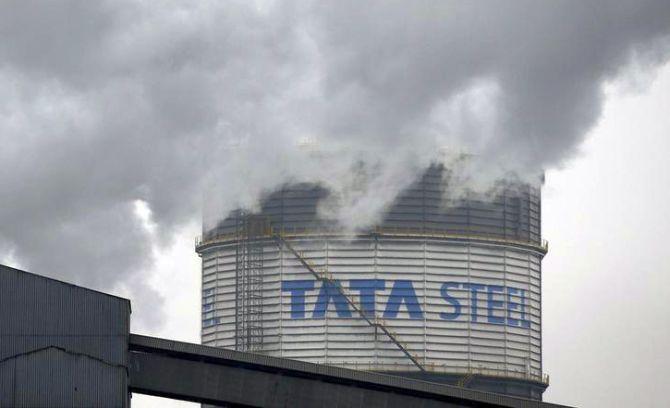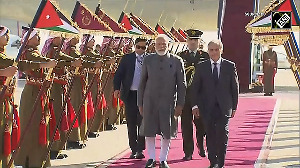It was August 2007. Tata Steel was turning 100. Jamshedpur, its hometown, had an air of celebration.

The line-up for the special event included the launch of Air Deccan’s commercial flight connecting Kolkata and Jamshedpur, and release of Russi Lala’s new book, Romance of Tata Steel.
There was also the screening of The Spirit of Steel, a 20-minute documentary directed by Zafar Hai showcasing Tata Steel’s legacy, and a corporate anthem penned by Javed Akhtar and composed by Shankar, Ehsaan and Loy.
Evidently, Tata Steel was not merely celebrating its hundredth year, but also the advent of an Indian company on the global stage.
Months earlier, it had scooped up Anglo-Dutch steelmaker Corus Group Plc, later renamed Tata Steel Europe, in a £6.2 billion deal, marking the largest cross-border acquisition by an Indian company and jumping from 56th to sixth in the ranking of global steelmakers.
That was when the commodity cycle was at its peak and steel prices were at a record high.
Tata Steel’s consolidated profit after tax moved from Rs 4,166 crore in 2006-07 (FY07) to Rs 12,322 crore in FY08, mostly on the back of the newly acquired European business, which then accounted for 69 per cent of revenues.
But the latter half of 2008 saw the onset of the global financial crisis.
Steel prices collapsed. In the 15 years that followed, Tata Steel’s European operations have probably hit the highs of its first year only a couple of times.
Crisis point
Tata Steel Europe has two primary steelmaking sites: Ijmuiden, in the Netherlands, and Port Talbot in Wales.
The Dutch operations have been self-sustaining.
Recently, however, Tata Steel announced a reduction of 800 jobs in Ijmuiden to “remain structurally competitive and profitable now and in the future”.
It said that the measures being taken were in the interest of the transformation to a cleaner, greener and more circular steel company.
But the UK arm has historically been a pain point.
A new deal promises to provide much-needed balm.
On September 15, after almost three years of discussion, Tata Steel and the UK government reached an agreement on an investment proposal at Port Talbot.
The £1.25 billion proposal includes a grant from the UK government of up to £500 million in an electric arc furnace-based (EAF) steelmaking operation.
Pegged to be one of the largest investments in the UK steel industry in decades, the project would pave the way for decarbonisation at Port Talbot, currently the UK’s single largest carbon emitter.
The move to EAF would reduce the site’s carbon emissions by around 5 million tonnes (mt) a year — a carbon footprint of almost 2 million homes in the UK.
“We want to replace the blast furnaces with one big EAF having a capacity of around 3 mt of steel, which is what we produce today,” T V Narendran, managing director and chief executive officer, Tata Steel, told Business Standard in a recent interview.
The operations at Port Talbot are at a crossroads, with the blast furnaces and coke ovens, or the “heavy-end assets”, approaching end of lifespans.
Reinvesting in the existing assets is not an economically and environmentally viable option.
The carbon cost is almost £70 million a year and the yearly sustenance capex around £80-90 million.
Fixing Port Talbot
A shift to a new business model and consequent restructuring is expected to bring down the cost by £100-150 million per tonne and make the business Ebitda- and cash-positive.
The Ebitda margins — Ebitda is short for earnings before interest, tax, depreciation and amortisation — which have been 2 per cent at best and negative in many years, would be at a steady 8-10 per cent.
For the EAF process, Tata Steel plans to use locally sourced scrap, which, according to Narendran, will give “a bit of insurance against cyclicality”.
The UK is the second largest producer of scrap but exports most of it and then imports it back as steel.
The major input materials for the BF-BOF steelmaking at Port Talbot currently are iron and coal.
“When we import iron ore and coal, there is a three-month lag; whereas, when we buy scrap from the domestic market, the supply chain will be shorter,” Narendran explained.
“The investment and the restructuring would put us in a far better place than we are today,” Narendran added.
An improvement in its UK cost structure and Dutch operations would ensure Tata Steel’s credit profile stays solid, even if steel prices remain soft and global steel demand weakens amid rising interest rates and weak economic outlook in most end-user markets, Moody’s said in its report in September.
The rating agency has upgraded Tata Steel to investment grade.
Tata Steel is yet to make public the potential redundancies from shutting down the blast furnaces, but it is widely speculated to be about 3,000.
There is a clamour in the UK from trade unions around it even as the clock ticks on the ageing heavy-end assets.
Tata Steel UK employs more than 8,000 people, about half of them at Port Talbot.
"There will be job losses, but we are creating a sustainable business, protecting most of the jobs and keeping steelmaking in the UK,” Narendran said.
Structurally weak operation
The £500 million support is one of the largest UK government support packages in history. Sans it, Tata Steel had made it clear that Port Talbot faced closure.
Why is government support necessary?
Apart from the fact that most EU nations are providing financial support to companies for decarbonisation, Tata Steel’s UK business is structurally weak.
It runs two blast furnaces but is not self-sufficient in coke, a key input.
The opex and capex costs are high and the downstream assets scattered all over the UK.
The UK operations have faced multiple challenges because of the vintage nature of the plants, lack of adequate backward integration, and elevated carbon costs, according to Jayanta Roy, senior vice president at rating agency ICRA.
A large impairment in the second quarter of FY24 — Rs 12,560 crore in standalone financial statements — on account of the investment value in UK operations with the impending transition reflects the challenges.
But Tata Steel reined in the unprofitable side over the years from 14.4 mt at the time of acquisition to around 5 mt (optimal production has hovered at around 3 mt).
In 2011, Tata Steel sold Teesside Cast Products to Sahaviriya Steel of Thailand for $469 million.
In 2016, Scunthorpe was sold to Greybull Capital, reportedly for a token amount. In 2017, the specialty steel business was sold to Liberty House for £100 million.
Betting on India
The only upstream asset in the UK now is Port Talbot.
This, though, is the story of the steel industry in the UK.
It supported 320,000 jobs in 1971, compared to 23,000 in 2019 (excluding steel processing), as China rose with its cheaply produced steel.
Tata Steel has overhauled its manufacturing footprint, growing the profitable side (in India) and reducing the European influence.
In FY16, the geographic composition of Tata Steel was one-third India and two-thirds international.
This has been reversed.
As it doubles capacity in India to 40 mt by 2030, India’s share will increase to more than 75 per cent from the current 62 per cent.
“Any investment in India is value accretive and we are on course to achieve 40 mt capacity by 2030 as of now,” Narendran said.
“The background work on preparing the detailed engineering plans is going on.”
After all, India is where the margins and mines lie, and so does Tata Steel’s hometown.
Disclaimer: This article is meant for information purposes only. This article and information do not constitute a distribution, an endorsement, an investment advice, an offer to buy or sell or the solicitation of an offer to buy or sell any securities/schemes or any other financial products/investment products mentioned in this article to influence the opinion or behaviour of the investors/recipients.
Any use of the information/any investment and investment related decisions of the investors/recipients are at their sole discretion and risk. Any advice herein is made on a general basis and does not take into account the specific investment objectives of the specific person or group of persons. Opinions expressed herein are subject to change without notice.











